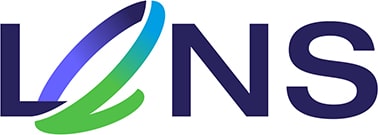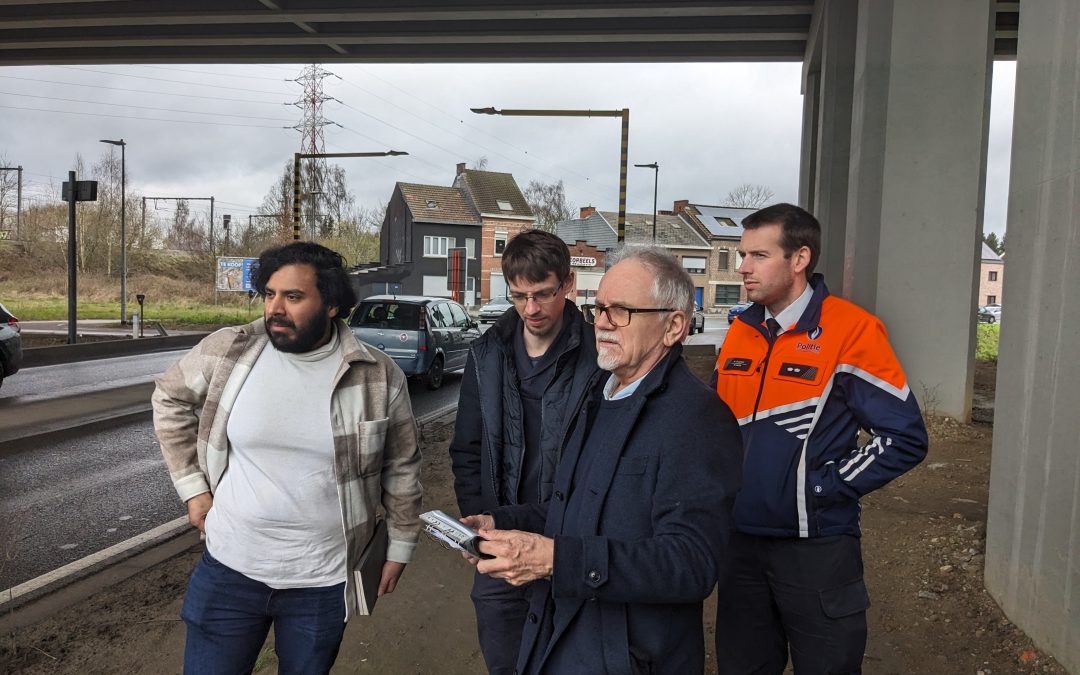Theoretically, measuring noise- and air pollution of L-vehicles and other traffic seems straightforward: technical experts set up the equipment next to a road, noise- and air pollution data is recorded and vehicles with anomalies are flagged down by the local police. Unfortunately, the reality is a bit more complicated and requires a careful selection of suitable measurement sites and cooperation between the technical experts, the local authorities and the police. Whereas the cooperation of the involved entities is very advanced, the site selection is a bit more challenging.
Therefore, Ake Sjodin (IVL), Hervé Denayer (KU Leuven), Hafiz Imtiaz (TU Graz) and Mathieu Caudron (Leuven Police) met in Leuven to inspect and narrow down the potential measurement sites, which are located in the historic centre of the Belgian city, around the KU Leuven campus in Heverlee in the South of Leuven and next to several major arterial roads to the Belgian city.
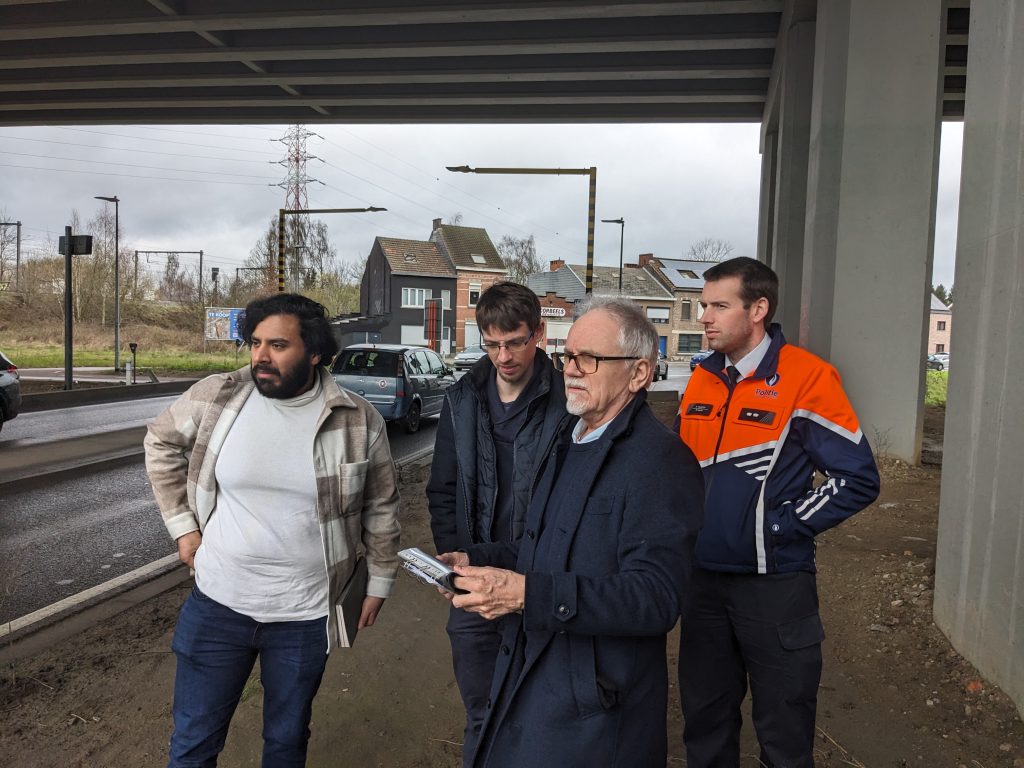
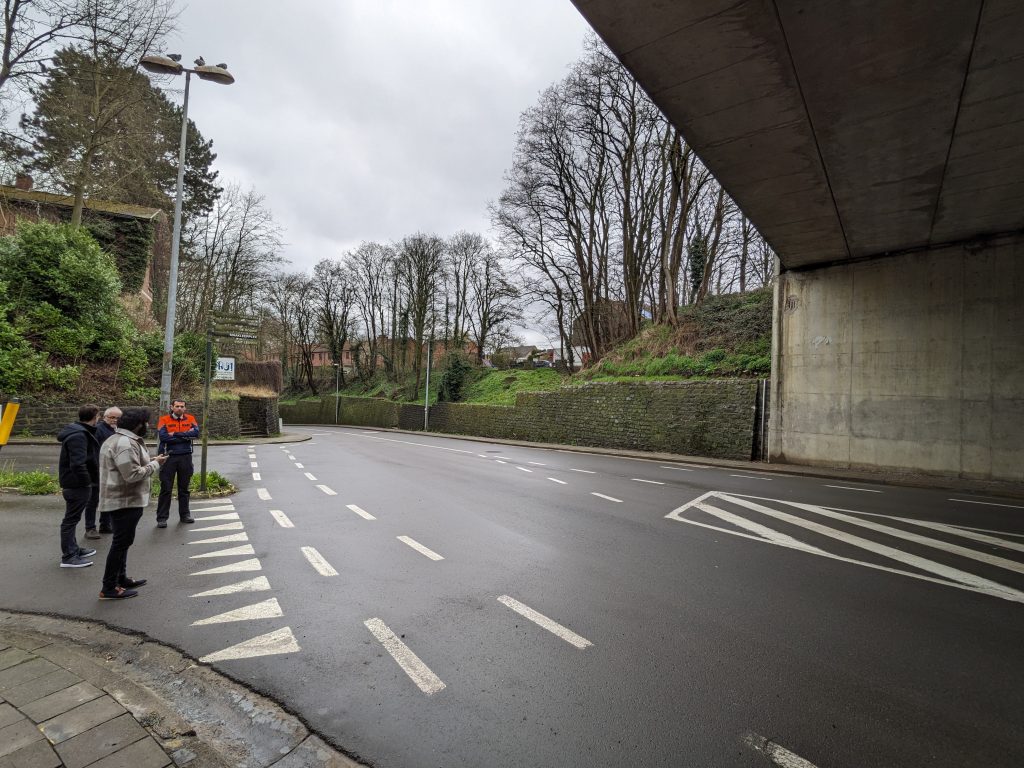
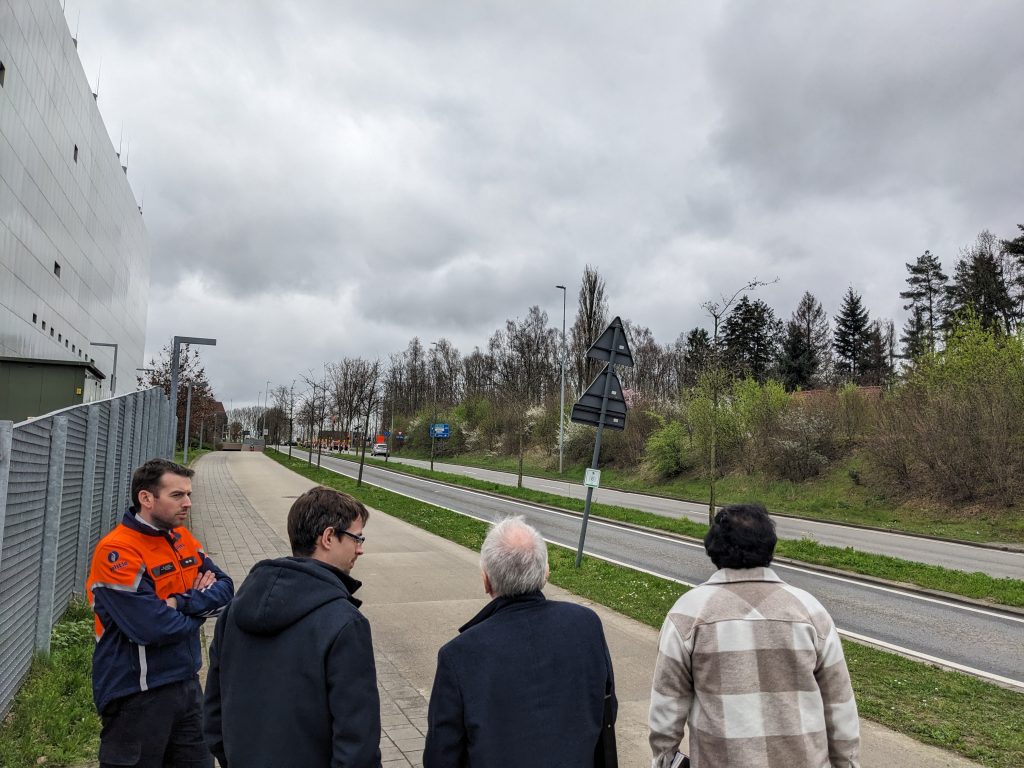
The site visits were based on a first pre-selection of sites, grounded on Google Maps data and the expertise of the local police and KU Leuven. Measuring expert Ake Sjodin (IVL) highlighted the five main requirements for a good measuring site:
- Location with passing L-vehicles
This rather obvious prerequisite is achieved by either selecting a measurement site with a significant traffic volume or by choosing a location close to a popular destination of L-vehicle drivers. The latter is challenging in Leuven, as most citizens and especially students use bikes to get from A to B, whereas the use of L-vehicles among students is much more common in Southern European cities. - Sufficient space to position research equipment
To park the van with the measurement equipment, while having a good and direct access to passing (L-)vehicles on the road. Since LENS is testing larger research equipment, more space is required in comparison to smaller market-ready devices. - An increased slope before the measuring site
To guarantee that passing (L-)vehicle drivers will use at least some capacity of the motor, while passing the testing equipment to guarantee noise- and air pollution emission. - Limited noise disturbance from external sources
If possible, other noise disturbances should be avoided, such as passing talking pedestrians or other non-traffic related background noises. - Shelter from potential rain
Bridges are ideal to keep the delicate testing equipment dry and avoid air pollution measurement impacts from rainfall. Nevertheless, the bridge creates noise reflections that can disturb noise pollution testing. Thus, such equipment will be placed either before or after a bridge.
More than a dozen sites were assessed based on these criteria, which led to several discussions between the experts, while making additional observations on location. Overall, a pre-selection of seven locations were made, which will be further narrowed down to a final selection of the measurement sites. Members of the city platform & stakeholder group will have the chance to gain further insights in the campaign and visit dedicated measurement sites in Leuven in an upcoming event in Mid-May. More information about the event will follow in the upcoming weeks.
